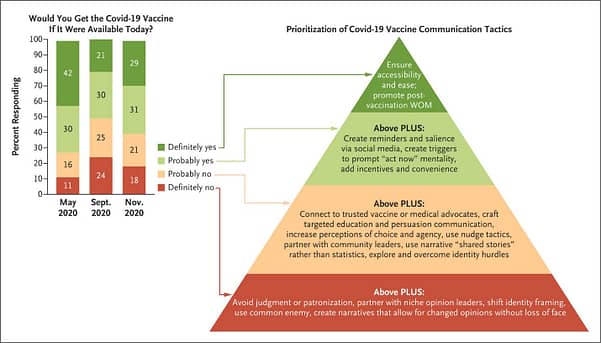By Robert L. Moore, MD, MPH, MBA, Chief Medical Officer
“Wishful thinking is no substitute for careful planning.”
-Steve McConnell
As you are no doubt aware, starting on March 15, adults aged 18-64 with certain medical conditions will qualify for COVID vaccination, based on the clinical judgement of their medical providers. See below for the full list.
Operationalizing this process, coordinating the judgement of the clinician with the actual vaccinators will be challenging if the provider making the judgement is not also doing the vaccination. Even if the provider is doing both, the sheer volume of patients who qualify is daunting and raises many questions:
Do you treat all the groups below equally, or do you prioritize subsets for your first outreach efforts? How exactly does this fit into the patients who sign up through the centralized myturn.ca.gov site? How can myturn.ca.gov possibly know who meets the medical criteria based on their physician judgement? What role will Blue Shield play? The three final options in the list are vague and allow clinician judgement that may not be uniform. How do you interpret that language for your patient population?
While we may wish that these questions will be answered by March 15, it is probable that they won’t be. Each of your health centers, offices and organizations will be expected to use this general guidance to create their own operational plans. This will likely involve using the registry function of your electronic health records to generate lists of potential patients in each group, sub-prioritizing your own outreach activities, and communicating this clearly to your patients. It will also involve ramping up and streamlining your vaccination process, from taking sign-ups, verifying eligibility, checking identity, and auditing for misapplication of the criteria.
These next few months will be even more challenging for primary care. Hope for the best, but plan for the worst. Keep your plans flexible and adaptable to most likely challenges: variable vaccine supply and disconnected communication between the different systems that will need to work together.
Provider Bulletin from the California Department of Public Health:
Beginning March 15, healthcare providers may use their clinical judgement to vaccinate individuals aged 16-64 who are deemed to be at the very highest risk to get very sick from COVID-19 because they have the following severe health conditions:
- Cancer, current with debilitated or immunocompromised state
- Chronic kidney disease, stage 4 or above
- Chronic pulmonary disease, oxygen dependent
- Down syndrome
- Immunocompromised state (weakened immune system) from solid organ transplant
- Pregnancy
- Sickle cell disease
- Heart conditions, such as heart failure, coronary artery disease, or cardiomyopathies (excludes hypertension)
- Severe obesity (Body Mass Index ≥ 40 kg/m2)
- Type 2 diabetes mellitus with hemoglobin A1c level greater than 7.5%
OR
If as a result of a developmental or other severe high-risk disability, one or more of the following applies:
- The individual is likely to develop severe life-threatening illness or death from COVID-19 infection
- Acquiring COVID-19 will limit the individual’s ability to receive ongoing care or services vital to their well-being and survival
- Providing adequate and timely COVID care will be particularly challenging as a result of the individual’s disability

